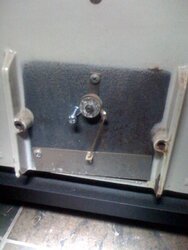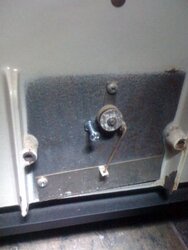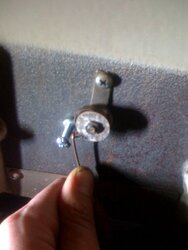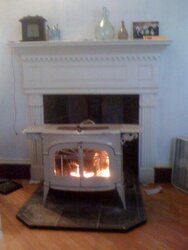Tonight I fired up my Encore cat 2550 again. Ran out of wood at the house, so wasn't running the last week. I got bunch of well seasoned cherry from my dad today...
I got things going nice and slow, had 2 logs in burnt down into coals, then filled it up to the griddle.
Primary air control open, cat bypassed. 15-20 min like this to char the splits. Then engage the cat. after 5 min or so, flames die down, slowly close down the primary air in steps. After 45 min, I hear the stove making more noise. More air pulling through the thing. Temp is 575, but lots of air noise. I look behind the stove, and the secondary flapper is open pretty far.
I haven't seen this happen yet. The whole back of the stove seems pretty hot. griddle temp still 575.
I have only seen the flapper closed when the stove was hot in operation. Is it possible that the spring/arm went over center and lifted the flap?
How's this thing supposed to work?
I got things going nice and slow, had 2 logs in burnt down into coals, then filled it up to the griddle.
Primary air control open, cat bypassed. 15-20 min like this to char the splits. Then engage the cat. after 5 min or so, flames die down, slowly close down the primary air in steps. After 45 min, I hear the stove making more noise. More air pulling through the thing. Temp is 575, but lots of air noise. I look behind the stove, and the secondary flapper is open pretty far.
I haven't seen this happen yet. The whole back of the stove seems pretty hot. griddle temp still 575.
I have only seen the flapper closed when the stove was hot in operation. Is it possible that the spring/arm went over center and lifted the flap?
How's this thing supposed to work?





